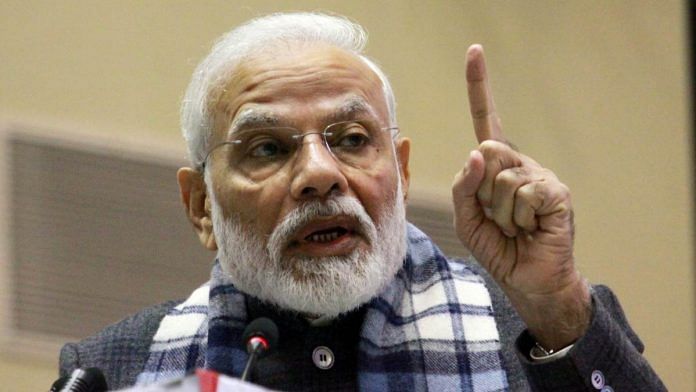Enough has been, and is being, written and said about Narendra Modi’s visit to America coinciding with the annual gathering of the United Nations General Assembly. And while it is true that in the American media and popular imagination, the Pope is the real star, followed at some distance by Chinese President Xi Jinping and Russia’s Vladimir Putin, the buzz created by Modi is entirely friendly and non-controversial. Further, his other activities – meetings with global CEOs and later visits to high-tech companies in Silicon Valley – have been fruitful in that they have helped strengthen the new Brand India built around modern education, technology and entrepreneurship.
Modi has done two significant things on this visit so far. First, he’s raised the diplomatic level of the visit by making reform of the Security Council and a permanent seat on it for India the central focus (even if my analyst’s view is that we Indians lay too much store, almost obsessively, over what we see as a place at the global high table, not realising that even if this seat were to become a reality, the new Council simply wouldn’t have powers of the old – and most likely, nor the veto. But it is still better than bringing petty domestic and regional disputes to the big gathering in New York). You look much more dignified seen in the company of Shinzo Abe, Angela Merkel and Dilma Rousseff in the new G-4, rather than going from one head of state to another asking them to restrain Pakistan from its support to terrorism.
Second, he has, for the first time, shifted the focus entirely to business, spending more time with global CEOs than with fellow world leaders. If economics is the new diplomacy and key strategic interest, Modi has made a firm direction shift.
But we Indians suffer from a chronic disease: it is called declaring victory too early. We get carried away by a little bit of good news or success, just as we get depressed by a couple of setbacks. In this case, we are quick to hail our prime minister as a rockstar among global leaders, overlooking the fact that his celebrity is a reality, but mostly confined among overseas Indians. Certainly, he is our globally best-known leader since Indira Gandhi, but a leader’s stature is as great as that of his country. We should not confuse a leader’s popularity with our own media and overseas residents to be a great Indian arrival on the global scene. A lot of hard work still remains to be done there.
For a nation and its leader to acquire real stature and attention globally, it has to become a dominant economic power (as China is), a stabilising and leader-like regional influence (like Germany), a strategic threat (like Russia) or, at the other extreme, an international migraine (like Pakistan, in Madeleine Albright’s words, not mine).
Also read: Silicon Valley, that championed open community work spaces, won’t be the same post lockdown
India’s economy is growing, and showing great promise. But it has a long way to go. It is a lazy thing to say we are the second-fastest growing economy in the world and may even beat China in pure growth rates soon. It overlooks the point that the size of our economy is still quite small compared to the big powers, and it is abysmal on per capita basis. The rest of the world, by and large, hails our progress and promise. But today, with hyper-communication and also focus on India, many of our warts too are more visible. These include inequality, caste-based discrimination, poor hygiene, disastrous air quality, crimes against women and now the latest self-inflicted calamity: our ban culture.
We have seen our leaders rise to global stature in the past, and the reasons were evident. While Jawaharlal Nehru’s stature drew from his own intellect, authorship of significant books and role in the freedom movement, it was also enhanced greatly by India’s stature as one of world’s poorest countries that successfully fought for freedom peacefully and then gave itself a liberal, democratic, secular constitution, accommodating so many diversities. But because India’s economy and military power didn’t grow to match that stature, it inevitably declined along with Nehru’s after defeat by the Chinese in 1962.
Similarly, Indira Gandhi came to be acknowledged as the leader of the non-aligned world and rose in global power and attention with success in the Bangladesh war in defiance of the Nixon-Kissinger America. But once India’s economy struggled post-1971, mainly because of her unwise and cynical shift to the Left, leading to imposition of the Emergency, India again lost its respect and Indira Gandhi was seen as an embarrassment.
India has a record of promising the world wonderful things, in flashes, and then failing its expectations. Even the growth burst after the 1991 reform, and then a great decade between 2000 and 2010, was lost in messy politics or ideological confusions or both.
The rise of Modi with a full majority in Lok Sabha after 30 years has again raised global expectations. India cannot afford to under-perform yet again and disappoint the entire world. Remember, a nation cannot ride the popularity or global respect in which its leaders are held – it is entirely the other way around. A leader is as powerful and respected as the nation he leads. That’s why there is a great deal of work left to do at home when Modi returns.
Also read: Inflation targeting has worked for India, it is one of Modi govt’s defining achievements






